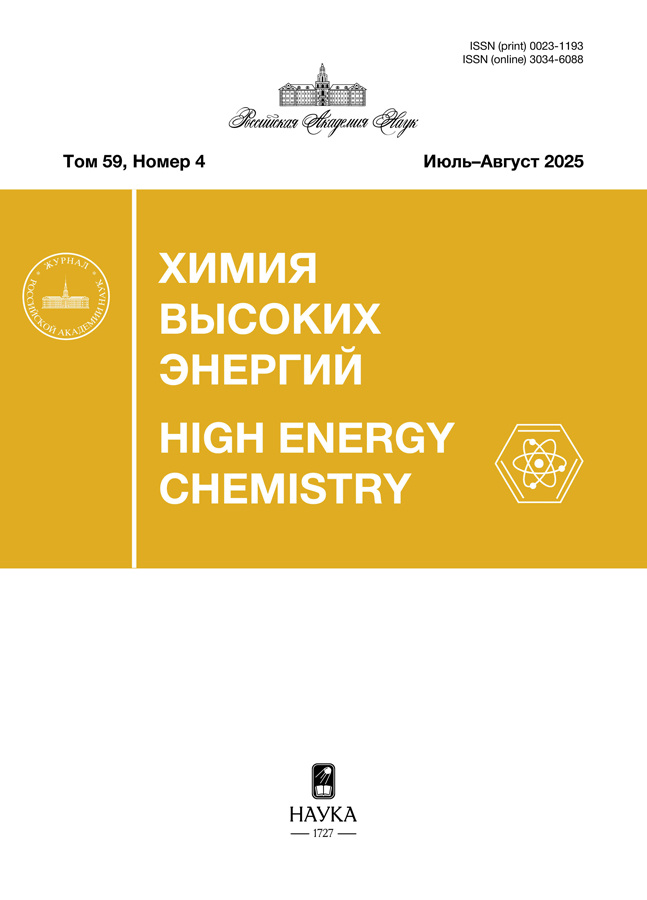Uniformity of electron beam cross-linking of polyethylene depending on the distribution of the absorbed radiation dose
- Авторлар: Popova A.V.1, Artamonova K.A.1, Bludenko A.V.1, Kholodkova E.M.1, Vlasov S.I.1, Ponomarev A.V.1
-
Мекемелер:
- Frumkin Institute of Physical Chemistry and Electrochemistry RAS
- Шығарылым: Том 59, № 4 (2025)
- Беттер: 229–234
- Бөлім: RADIATION CHEMISTRY
- URL: https://permmedjournal.ru/0023-1193/article/view/687705
- DOI: https://doi.org/10.31857/S0023119325040061
- EDN: https://elibrary.ru/ayadnq
- ID: 687705
Дәйексөз келтіру
Аннотация
The crosslinking of polyethylene of pipe grades via 900 keV electrons at an absorbed dose of 50 to 400 kGy in the presence of antioxidants and a crosslinking agent was studied. The degree of crosslinking of polyethylene was measured by the content of the gel fraction, determined by its extraction in xylene. It was shown that in all cases the 60% degree of cross-linking is achieved at a dose of about 100 kGy. It is advisable to combine the standard method for determining the gel fraction with visual inspection of samples to identify the conditions for the formation of an excessively low-melting material. It has been shown that ±7% crosslinking degree non-uniformity can be achieved with dose non-uniformity of up to ±50%.
Негізгі сөздер
Толық мәтін
Авторлар туралы
A. Popova
Frumkin Institute of Physical Chemistry and Electrochemistry RAS
Email: ponomarev@ipc.rssi.ru
Ресей, Moscow
K. Artamonova
Frumkin Institute of Physical Chemistry and Electrochemistry RAS
Email: ponomarev@ipc.rssi.ru
Ресей, Moscow
A. Bludenko
Frumkin Institute of Physical Chemistry and Electrochemistry RAS
Email: ponomarev@ipc.rssi.ru
Ресей, Moscow
E. Kholodkova
Frumkin Institute of Physical Chemistry and Electrochemistry RAS
Email: ponomarev@ipc.rssi.ru
Ресей, Moscow
S. Vlasov
Frumkin Institute of Physical Chemistry and Electrochemistry RAS
Email: ponomarev@ipc.rssi.ru
Ресей, Moscow
A. Ponomarev
Frumkin Institute of Physical Chemistry and Electrochemistry RAS
Хат алмасуға жауапты Автор.
Email: ponomarev@ipc.rssi.ru
Ресей, Moscow
Әдебиет тізімі
- Burillo G., Clough R.L., Czvikovszky T., Guven O., Le Moel A., Liu W., Singh A., Yang J., Zaharescu T. // Radiat. Phys. Chem. 2002. V. 64. P. 41.
- Dorigato A. // Adv. Ind. Eng. Polym. Res. 2021. V. 4. P. 53.
- Geyer R., Jambeck J.R., Law K.L. // Sci. Adv. 2017. V. 3. P. e1700782.
- Chmielewski A.G. // Radiat. Phys. Chem., 2023. V. 213. P. 111233.
- Ponomarev A.V., Gohs U., Ratnam C.T., Horak C. // Radiat. Phys. Chem. 2022. V. 201. P. 110397.
- Ponomarev A.V. // High Energy Chem. 2020. V. 54. P. 194.
- Woods R., Pikaev A. // Applied Radiation Chemistry. Radiation Processing. NY: Wiley, 1994.
- Pikaev A.K. // High Energy Chem. 2000. V. 34.
- Ponomarev A.V. // Radiat. Phys. Chem. 2016. V. 118. P. 138.
- Albrecht V., Simon F., Reinsch E., Schünemann R., Gohs U., Kretzschmar B., Peuker U.A. // Recover. Recycl. Technol. Worldw. 2016. V. 2. P. 36.
- Cleland M., Galloway R., Genin F., Lindholm M. // Radiat. Phys. Chem. 2002. V. 63. P. 729.
- Perrin C., Griseri V., Laurent C. // IEEE Trans. Dielectr. Electr. Insul. 2008. V. 15. P. 958.
Қосымша файлдар













